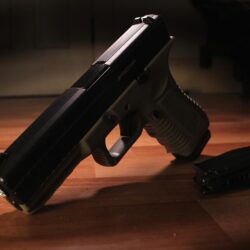Projectors have revolutionized the way we experience visuals at home, in offices, and in classrooms. They offer scalable images that can rival an ultra wide monitor, providing immersive experiences from movies to presentations. However, achieving the best image quality depends on understanding throw distance and projector placement. Knowing the short throw projector distance, projection throw distance, and how far the projector should be from the screen is essential for optimizing clarity, brightness, and color accuracy.
Understanding Throw Distance
Throw distance is the space between the projector lens and the screen. It directly affects image size, focus, and brightness. Short throw projectors are designed to project large images from minimal distances, while long throw projectors require more space to achieve the same image size. Calculating projection throw distance ensures that the image fills the screen properly without distortion and maintains sharpness across its entirety.
Accurate placement reduces reliance on digital keystone correction, which can degrade image quality. By knowing how far the projector should be from the screen, users can optimize both short throw and long throw setups for the best viewing experience.
Choose the Right Projector
Selecting a projector that suits your room size and screen requirements is the first step toward achieving the best image. Short throw projectors are ideal for apartments, small home theaters, and classrooms, while long throw projectors are better suited for large auditoriums and conference rooms. Check the projector specifications for throw ratio and brightness. High lumen output is crucial for rooms with ambient light, while short throw models provide flexibility in compact spaces.
Correct Calculation of Projection Throw Distance
To achieve optimal image quality, calculate the projection throw distance using the throw ratio and screen width. The formula is simple:
Projection Throw Distance = Screen Width x Throw Ratio
For example, if the screen is 10 feet wide and your projector has a throw ratio of 0.5:1, the projector should be placed 5 feet from the screen. This ensures the image fills the screen appropriately and is focused across the entire display. Short throw projector distance is particularly critical in smaller spaces, as small placement errors can cause noticeable distortion.
Position the Projector Correctly
Once the throw distance is calculated, proper positioning is key. Place the projector at a height level with the bottom of the screen or slightly below for the best results. Many projectors feature lens shift to adjust vertical and horizontal alignment without moving the projector physically. Center the projector horizontally to avoid skewed images and minimize the need for digital correction.
Adjust for Ambient Light
Ambient light can drastically affect image quality. Even with the correct projection throw distance, a bright room can make colors appear washed out and reduce contrast. Control lighting by using curtains, blinds, or dimmable lights. High lumen projectors can help, but controlling the environment is always the most effective solution.
Use Proper Screen Material
The type of screen or wall surface also affects image quality. Matte white screens are ideal for uniform brightness, while specialized projector screens can enhance color contrast and sharpness. For ultra wide monitor-like visuals, ensure the screen is flat and free of obstructions. Proper screen material maximizes the effectiveness of the calculated projection throw distance and provides a crisp viewing experience.
Fine-Tune Focus and Zoom
After positioning, fine-tune focus and zoom to achieve a sharp, full-size image. Use test patterns or high-resolution content to adjust the focus for uniform clarity across the screen. Short throw projectors, in particular, may require careful adjustment because the distance to the screen is minimal. A well-focused image ensures viewers enjoy clear visuals comparable to an ultra wide monitor.
Optimize Color and Contrast
Many projectors allow adjustments for brightness, contrast, and color saturation. After setting the correct throw distance, calibrate these settings to match the viewing environment. Proper calibration ensures that shadows, highlights, and colors are displayed accurately, providing an immersive experience whether watching movies, gaming, or giving presentations.
Avoid Common Mistakes
-
Incorrect Distance: Placing the projector too close or too far can distort the image or reduce brightness.
-
Improper Height or Angle: Skewed or trapezoidal images can result from misalignment.
-
Overreliance on Digital Corrections: Excessive keystone adjustment reduces image sharpness.
-
Neglecting Ambient Light: Bright rooms require controlled lighting or higher lumen projectors.
Comparing to Ultra Wide Monitors
While ultra wide monitors provide consistent visuals without setup concerns, projectors offer scalable images for immersive viewing. By correctly calculating short throw projector distance and projection throw distance, projectors can deliver larger-than-life visuals that surpass monitors in size and cinematic experience. Proper placement ensures viewers enjoy the best image quality regardless of room size.
Conclusion
Getting the best image at any throw distance requires careful planning, accurate calculations, and proper setup. Understanding short throw projector distance, projection throw distance, and how far the projector should be from the screen is essential for achieving sharp, bright, and immersive visuals.
By choosing the right projector, calculating distance accurately, controlling ambient light, and fine-tuning focus and alignment, users can enjoy a viewing experience that rivals an ultra wide monitor. Proper setup maximizes image quality, ensures comfort, and creates a cinematic experience in any environment.
Read more: https://easybacklinkseo.com/choosing-the-right-projector-based-on-throw-distance/



